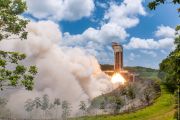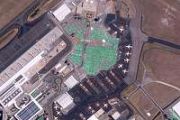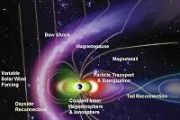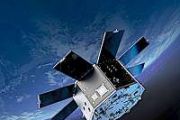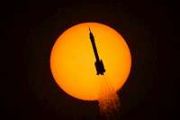
Copernical Team
Hark! A mystery sign in space (ExoMars Trace Gas Orbiter)
 Image:
Image:
A message will soon be received from outer space and you are invited, along with the global community, to decipher it. Does its messenger, the ExoMars Trace Gas Orbiter, count as extraterrestrial intelligence? Probably not. So, until we hear from aliens themselves, the martian orbiter is playing the role of green man in the ‘A Sign in Space’ global art project.
If we were to receive a signal from space, it would likely not be just scientists who catch it. Today, many individuals, organisations, universities and companies have access to antennas that are pointed skyward.
Any message received would be for the whole planet
Fighting wildfires in France | FIRE Preview
 Video:
00:12:42
Video:
00:12:42
Enjoy a sneak peek of ESA’s new documentary that looks at fire in all its fury - and how satellite technology is helping to mitigate this consequence of climate change. Join us on this journey as we meet the firefighter who fought one of the largest wildfires in his career, climate scientists working with satellite data, and the people on the frontline using these data to aid those affected. The full documentary will be released this summer.
South Korea cancels satellite launch plan citing technical problem

South Korea canceled its planned launch Wednesday of its first commercial-grade satellite due to a technical issue, days after rival North Korea reaffirmed its push to place its first military spy satellite into orbit.
Research Fellows in space science 2023
 Image:
Image:
ESA has selected 12 new Fellows to pursue their own independent research in space science in 2023 The Research Fellowships in Space Science represent one of the highlights of the ESA Science programme. Early career postdoctoral scientists are offered the unique opportunity to carry out advanced research related to the space science areas covered by ESA Science missions at one of three ESA establishments (ESAC, ESTEC or STScI) for a period of up to three years.
The 2023 Research Fellows in Space Science are Ashley Chrimes, Guillaume Cruz-Mermy, Marjorie Decleir, Camille Diez, Henrik Eklund, Elena Favaro, Thibaud Moutard , Isabel
ESA plays alien in art project pondering life beyond Earth

Light shining through a wall experiment searches for dark matter
 An international research team is employing an innovative approach to detect elusive, extremely light new elementary particles, known as axions or axion-like particles, using the Any Light Particle Search (ALPS) experiment. This groundbreaking experiment leverages twenty-four repurposed superconducting magnets from the HERA accelerator, intense laser beams, precision interferometry, and highly s
An international research team is employing an innovative approach to detect elusive, extremely light new elementary particles, known as axions or axion-like particles, using the Any Light Particle Search (ALPS) experiment. This groundbreaking experiment leverages twenty-four repurposed superconducting magnets from the HERA accelerator, intense laser beams, precision interferometry, and highly s MAHLI works the night shift: Sols 3837-3838
 Earth planning date: Monday, May 22, 2023- Curiosity successfully wrapped up the "Ubajara" drill campaign over the weekend with some imaging of the drill tailings. This Monday, we are planning two sols (Mars days) of activities to finish up at Ubajara before driving off in the coming sols. Most targeted science today is focused on bedrock target "Apetina," which is situated on the same block as
Earth planning date: Monday, May 22, 2023- Curiosity successfully wrapped up the "Ubajara" drill campaign over the weekend with some imaging of the drill tailings. This Monday, we are planning two sols (Mars days) of activities to finish up at Ubajara before driving off in the coming sols. Most targeted science today is focused on bedrock target "Apetina," which is situated on the same block as Mars rover Zhurong finds evidence of water at red planet's low latitudes
 China's Mars rover Zhurong has provided key observational evidence of liquid water at low Martian latitudes, the warmest regions on the red planet, according to a new study published in the journal Science Advances this week.
Previous studies found evidence of a large amount of liquid water on early Mars, but dramatic climate changes led to very low pressure and water vapor content, making
China's Mars rover Zhurong has provided key observational evidence of liquid water at low Martian latitudes, the warmest regions on the red planet, according to a new study published in the journal Science Advances this week.
Previous studies found evidence of a large amount of liquid water on early Mars, but dramatic climate changes led to very low pressure and water vapor content, making Planet announces AI Partnerships at GEOINT 2023
 Planet Labs PBC (NYSE: PL), a leading provider of daily data and insights about Earth, has announced new strategic partnerships with artificial intelligence (AI) analytics providers at the U.S. Geospatial Intelligence Foundation's 2023 GEOINT Symposium. These companies' AI-powered analytics enable object detection and classification services on top of Planet's high-frequency, medium- and high-re
Planet Labs PBC (NYSE: PL), a leading provider of daily data and insights about Earth, has announced new strategic partnerships with artificial intelligence (AI) analytics providers at the U.S. Geospatial Intelligence Foundation's 2023 GEOINT Symposium. These companies' AI-powered analytics enable object detection and classification services on top of Planet's high-frequency, medium- and high-re 
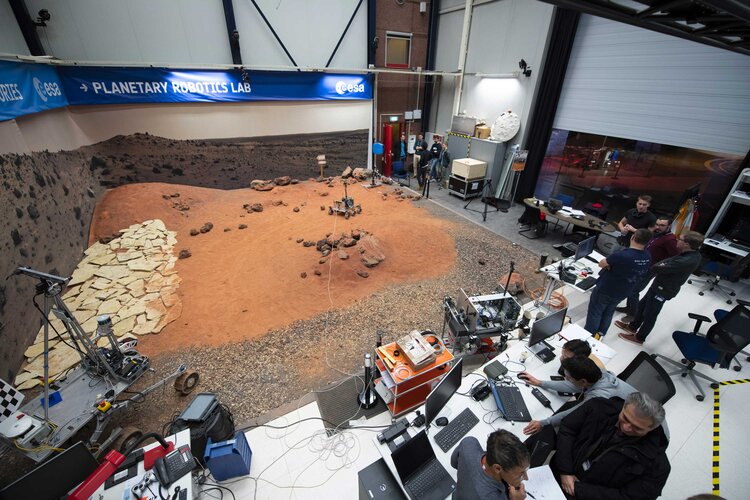 Image:
Mars corner
Image:
Mars corner 










